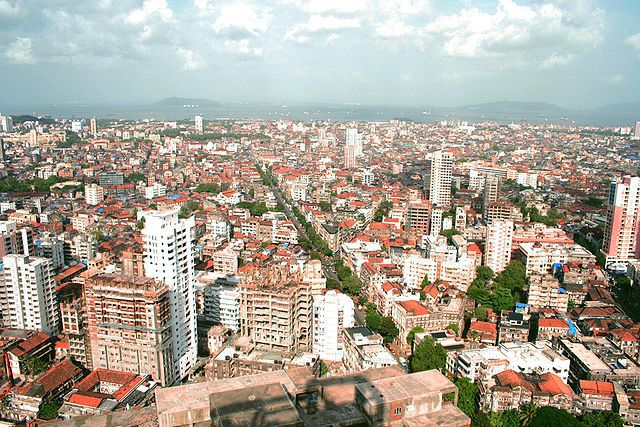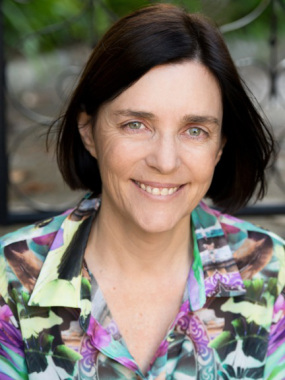
Mine started a day in December 2004, when I sat in a Premier Padmini cab, three bulging suitcases tied with a blue rope to its roof. We had left behind a troubled history in the unyielding city that was Delhi, sold off our nine-month-old flat, our second-hand Maruti 800 DX and all the furniture bought from Panchkuia’s bargain stalls, to give ourselves a second chance. It seemed most appropriate to do it here in Mumbai, where we could be anonymous and as ridiculously optimistic as everyone else.
My husband had disappeared into the innards of a skinny alley somewhere on Yari Road, Versova. Our landlord, an elderly Muslim gent who resembled the affable actor A.K. Hangal, was supposed to hand over the keys to our flat. It was a hot and sunny day. Traces of the Delhi winter lingered in my clothes, even as Mumbai worked its way under my skin and oozed from my pores. The osmosis had begun.
I waited in the grimy, noisy car, taking in bits of the sea that shimmered between the low houses and cottages-turned shops and cafes. I tried to ignore the stench of fish hung up to dry. I waited for the keys to our new life, new story, with a book my husband had gifted me at the airport where he had come to meet me. ‘You will need this,’ he had said, as I unwrapped a copy of Suketu Mehta’s Maximum City.
Twenty minutes later, a noisy elevator carried us up to the fifth floor of our new apartment complex, our first address in the city. My husband pried the gates open: Mumbai elevators can be notoriously stubborn, noisy, intimidating. They speak the language of the housing society managers and chairpersons who sit in judgement over whether you are worthy enough to rent or buy your own place in their prized complex. I hesitated to step out, thinking we had arrived at the wrong floor. Because all I could see in front of me was a wall. A solid, whitewashed wall. We stepped out and turned right. There was a freshly painted white door. And it opened to yet another corridor. From the entrance, where I stood, I could see another wall – the flat ended before it could even begin. I was Alice falling through the Rabbit Hole and waking up a size too big in a world too small. I would have died of claustrophobia, had it not been for the windows. Those gorgeous, sumptuous windows that opened to the sea. I had found my wonderland.
Our new home was everything a suburban Mumbai flat could be. Compact, ill-planned and inexplicably inviting. It was by far the smallest and most expensive home we had lived in. And over the years, it would be the most charming space we would ever inhabit. Because Shakti, B-504, Kalyan Complex – overlooking a crematorium, a burial ground and a sanatorium, and which offered a view of the ocean and a garden, a glimpse of Madh Island, and from where every night you could see fishing boats bobbing on the dark sea – was more than a physical place. It was a portal to a world that we would engage with for a decade, and yet it would always remain a chimera. Our neighbours were film stars and producers, models and choreographers. Sometimes we ran into them. At others, they left behind a whiff of their French perfumes in the elevator. Occasionally, one of them would drop all pretences and hurl full-bodied cuss words at a security guard or a driver or someone who may have failed to deliver whatever had been demanded of him. We lived in the heart of what you could say was the new tinsel town. Where coffee shops brimmed with aspiration and hope was a cookie that often crumbled. And we soaked it all in.
My love affair with Bombay began here, from Yari Road, in that cramped apartment that opened up my mind to the fantasy that was the city. It was crowded. It was boundless. It was teeming with strangers. And yet you would never feel out of place.
There are two things that anyone living in Mumbai is concerned about. Getting famous and/or buying your own home. The first is fuelled by its beautiful and glamorous residents who have made the city more famous than the national capital. The second is a dream shared by all the people who have landed here from all over the world. In Maximum City, Suketu Mehta writes about how scarcity of land is what shapes the city’s culture, philosophy, politics and economy. That and the cumulative energy of the homeless who have been braving the struggle and the dystopian living conditions in the hope of a better future and more than a toehold.
In 1977, Gulzar wrote Gharonda, a film starring Amol Palekar and Zarina Wahab that captured the essence of the Bombay mirage. Palekar and Wahab are your regular middle-class working couple, who dream of getting married and moving into a small flat of their own. They share their respective homes with flatmates and family and work hard to build a corpus for their ideal home. Unfortunately, the builder turns out to be a con man and the young couple’s dreams of starting a new life in a new home comes to a bitter end, and so does their relationship.
Basu Chatterjee, one of the pioneers of Hindi new-wave cinema, made a film called Piya Ka Ghar, starring Jaya Bhaduri and Anil Dhawan. It was the story of a young girl from a village who gets married to a young man in a large family living in a cramped room in a Mumbai chawl. While grappling with the lack of privacy, space and the peculiar dynamics of the family, she comes to terms with how the ‘city does not have enough place for everyone in its homes but there is always enough place for everyone in its heart’. That was in 1972.
Not much has changed since the film was made.
In 2014, while covering the Maharashtra assembly elections in Mumbai, veteran journalist Shekhar Gupta wrote an article titled ‘Mere Pass Space Hai’! He said: ‘No other city is perhaps as obsessed with the idea of space as Mumbai. … It defines its people, its culture and its conversations. It defines what they do, what they are pushed to do and what they are unable to achieve.’
Delhiites or those from Bengaluru and Chennai often scoff at the Mumbaikar’s ability to squeeze into the tiniest of spaces. Those from the north, particularly, are critical about how an average Mumbaikar may be quick to befriend you, but will never invite you home. Something they cannot identify with. Sometimes, they think Mumbaikars are too cold, a bit rude and stand-offish. But the truth is, most of them do not entertain at home. Certainly, not if they are sharing a 230 sq. ft of space with five other people or a one-room-kitchen apartment with three generations of family members. For youngsters living as paying guests or in rented apartments, house parties or inviting guests of the opposite gender are usually a no-no. The reason why the city’s streets are bustling, the coffee and chai shops buzzing and the restaurants and the Chowpatty beach always crowded is because socializing, for the average Mumbaikar, is almost always about meeting up at a friendly joint around the corner.
Film writer Raja Sen, for instance, has this story about how he, a pampered Bengali boy, arrived at the city from the lush Chittaranjan Park neighbourhood in Delhi and shacked up with a couple of friends in a garage-turned-room with corrugated sheets for walls. ‘My father visited me, and was horrified,’ he laughs. Sen, who has since then lived in various accommodations in the suburbs (including one where he had the privilege of being Bollywood star Kangana Ranaut’s neighbour, when she was fresh off the boat) and the finest memories he has is of the tiniest place he rented in Bandra. ‘It was not about the physical space but just the feel of being there, in the thick of it all. Everyone wants to be a part of the Bombay story, and you look at yourself as a protagonist in the gritty drama of Bombay life,’ he says of his days in Versova, Bandra and thereabouts. Sen eventually made headlines when the swank Bandra apartment he had rented out right after getting married collapsed. He was shooting his first feature at home and the floor of the house simply caved in, and he and his cast and crew landed on the floor below.
Once again to quote Shekhar Gupta: ‘… the commodity (in Mumbai), the asset or the luxury that tells rich from poor, successful from failed, struggling from having arrived, frustrated and angry from aspirational and lazily smug, is a five-letter word: space. Life in Mumbai is an endless struggle for space, or a celebration of having some of your own.’
The richest, he observes, and I completely agree with him, struggle as much for space as the poorest in the city do. The outsiders, the migrants are in the same boat as the natives, pushed out by spiralling real estate prices.
In 2010, four years before Gupta wrote his piece, an upscale housing society in the most-in-demand neighbourhood, reminded us once again of how deep and dark the city’s obsession with real estate could run. Adarsh, a thirty-one-storey building in Colaba, meant originally for Kargil war widows, became a symbol of the power, politics and corruption that had shaped Mumbai’s real estate industry. The controversy – about a syndicate of bureaucrats, politicians and military officers bending, breaking all possible rules to get flats at this coveted address – was a defining moment in the state’s political narrative. It was huge, but also so very ‘Bombay’. It forced a chief minister to resign and eventually toppled the government. In 2015, the army began the process of taking over the high-rise.
In 2014, the country would be shaken by pictures of hundreds of residents pushing back an army of policemen and civic body officials trying to break down the gates of a residential complex in Worli. It was a pitched battle of willpower and courage between the residents and civic body officials, who had arrived to cut down electricity, gas and water supplies to the high-rises in the Campa Cola compound that for ten years had been in a legal tangle over illegally constructed floors in two of the high-rises. The stories, pictures and a sharp social media campaign that emerged in the days leading up to the face-off and thereafter, narrated an urban tragedy of apocalyptic proportions. But not out of character for the city. This was a story of unscrupulous builders cocking a snook at the civic laws, selling off illegal floors to residents, who were so keen to own a property in south Mumbai that they continued to live without occupation certificates, which is issued by the Brihanmumbai Municipal Corporation (BMC). Despite their resistance, in June, 140 families had to accept the apex court order and vacate the flats. In 2016, residents returned to their homes, after the society was permitted to make a fresh representation to regularize the illegal flats. But, for the members, it was a close call. Even today, the Campa Cola compound is a synonym for the greed, corruption, desperation and politics that goes into the making of the Mumbai real estate story.
The hunger for space does not spare anyone, even though the triggers may be very different. I remember a conversation I had with Riyhad Kundanmal. A dashing polo enthusiast and bachelor who had married and dated some of the most high-profile women in Mumbai and the US, he had just separated from his wife, Alisha, scion of the Parle (biscuits) family. The Kundanmals, originally from Sindh, were into real estate development, automobile dealerships, property and estate collection and enhancement and paralegal services. An architect by training, Riyhad was more involved with designing and developing boutique properties while importing and selling luxe yachts to the new billionaires.
The Kundanmals’ interest in real estate and restoration, says Riyhad, may have had something to do with the fact that the family lost everything during Partition. He spoke of how his grandmother would ask his grandfather for money to buy spices and keep aside some of it in empty containers. As soon as she managed to create a corpus, she would buy a small plot of land somewhere in the city’s farthest suburbs. The moment it appreciated, she would sell it off for a neat profit and reinvest. For the Sindhis, recreating a bit of what they had left behind was the best way to reclaim their identity. ‘For my family, ensuring there was enough real estate investments to fall back on was more important than adding spice to the food,’ laughed Riyhad. Eventually, the Kundanmals emerged as one of the most high-profile business families in the city. They even bought an island in 2006!
Edited excerpts from the book At Home in Mumbai: Stories from the City’s Living Spaces (ISBN: 9789352773169) by Chandrima Pal, published by HarperCollins India.







